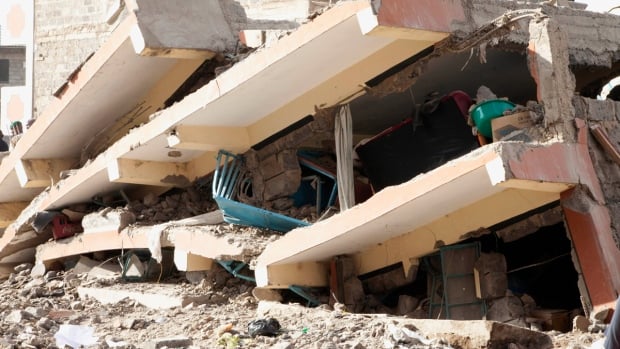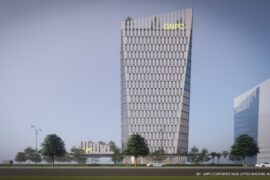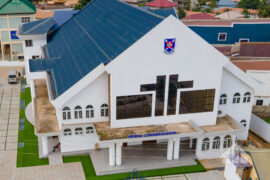Key Takeaways
- A building in Ofankor collapsed on October 12, 2023, due to structural integrity issues and poor construction practices.
- Preliminary investigations revealed the use of substandard materials and design flaws that compromised safety.
- Eyewitnesses reported chaos and panic as community members rushed to help those trapped under the rubble.
- Local organizations mobilized support through an Emergency Relief Fund, food distribution, and counseling services for affected families.
- Ongoing investigations aim to identify causes, enhance regulations, and develop safety measures to prevent future tragedies.
Overview of the Incident
On the afternoon of October 12, 2023, a tragic building collapse occurred in Ofankor, leaving the local community in shock. This incident raises critical questions about building safety and construction ethics within the area. Preliminary investigations revealed that the structure had displayed signs of distress prior to the collapse, which should’ve prompted immediate action. You might wonder if proper safety protocols were followed during the construction process.2 Bedroom Building Plan Ideas for Small Families in Ghana
Discover innovative 2-bedroom building plan ideas for small families in Ghana that maximize space and comfort—your dream home awaits!
Eyewitness Accounts
Witnesses have shared harrowing accounts of the building collapse in Ofankor, painting a vivid picture of the chaos and despair that unfolded. Eyewitness experiences reveal a scene filled with panic as the structure crumbled unexpectedly. One witness described a deafening roar, followed by thick dust enveloping the area, making it difficult to see or breathe. Personal testimonies emphasize the confusion, with many people scrambling to help those trapped beneath the rubble. Some bystanders reported hearing cries for help, which intensified their sense of urgency. Others recounted their attempts to call emergency services while grappling with the sheer horror of the situation. The emotional weight of these accounts underscores not only the physical devastation but also the psychological impact on those who witnessed the event. Collectively, these testimonies provide vital insights into the human experiences surrounding the collapse, highlighting the community’s resilience amid tragedy.Possible Causes of the Collapse
As you consider the possible causes of the collapse, structural integrity issues and poor construction practices stand out. You’ll notice that inadequate materials or design flaws can severely compromise a building’s stability. It’s crucial to analyze these factors to understand how they contributed to this tragic event.Structural Integrity Issues
While numerous factors can contribute to structural integrity issues, the collapse at Ofankor highlights vital lapses in design, materials, and construction practices. You should consider the following potential causes:- Inadequate Structural Assessments: Failing to conduct thorough evaluations can overlook weaknesses.
- Substandard Materials: Using inferior materials that don’t meet engineering standards can compromise safety.
- Design Flaws: Poor architectural planning can lead to insufficient structural support.
- Non-Compliance with Engineering Standards: Ignoring established guidelines can result in serious vulnerabilities.
What Are The Best Roofing Sheets For Ghana Houses?
Looking for the best roofing sheets for houses in Ghana? Discover the pros and cons of different options, from metal to concrete and clay, in this comprehensive guide.
Poor Construction Practices
Although various factors can lead to building failures, poor construction practices often play a significant role in compromising safety and structural integrity. You might notice that substandard building materials, chosen to cut costs, can severely weaken a structure. When contractors ignore construction ethics, they may prioritize profit over quality, leading to unsafe conditions. For instance, inadequate attention to detail during the construction process can result in improper installations, which can further endanger the building’s stability. Additionally, lack of skilled labor and oversight can contribute to these issues, as workers may not adhere to safety standards. Ultimately, addressing these poor practices is essential in preventing future collapses and ensuring the safety of occupants.Safety Regulations and Construction Standards
Safety regulations and construction standards play an essential role in preventing tragedies like the recent building collapse at Ofankor. When you think about construction compliance, it’s vital to recognize how these standards shape safe building practices. Effective regulatory enforcement guarantees that all construction projects adhere to established guidelines. Here are four key aspects to evaluate:- Design Codes: Structures must meet specific design requirements to withstand environmental stresses.
- Material Quality: Using certified materials minimizes the risk of structural failures.
- Construction Practices: Workers should follow best practices to guarantee stability and safety during the building process.
- Inspections: Regular inspections by qualified personnel help identify potential issues before they escalate.
Community Response and Reactions
In the wake of the Ofankor building collapse, local residents expressed deep concerns about safety measures and the adequacy of emergency services. You’ll observe how quickly emergency responders mobilized to assist those affected, highlighting both their commitment and the community’s need for reliable support. Community initiatives soon emerged, showcasing the resilience of residents coming together to provide aid and comfort in a time of crisis.Local Residents’ Concerns
As residents of Ofankor grapple with the aftermath of the building collapse, their concerns about safety and infrastructure have intensified. The tragedy has sparked significant community anxiety, leading to heightened demands for local safety measures. Here are some key concerns you might notice among your neighbors:- Structural Integrity: Many worry about the safety of nearby buildings and whether they meet safety standards.
- Emergency Preparedness: Residents are questioning the community’s readiness for future emergencies.
- Communication: There’s a call for better communication from local authorities regarding safety protocols.
- Community Support: Many feel there’s a need for more resources to support affected families and promote recovery.
Emergency Services Response
Community members have been closely observing the response of emergency services following the building collapse in Ofankor. Many noted that the implementation of emergency protocols was swift, with first responders arriving on the scene within minutes. However, some residents questioned the overall response efficiency, citing delays in additional resources and equipment. While initial rescue efforts focused on locating survivors, the community felt that communication could’ve been improved, as many were left in the dark about ongoing operations. Observers highlighted the importance of a coordinated approach among various agencies, emphasizing that a more streamlined response could enhance outcomes in future emergencies. As the situation unfolded, locals remained vigilant, evaluating how well emergency services managed this tragic incident.Community Support Initiatives
While the building collapse at Ofankor left many residents in shock, a remarkable wave of community support initiatives quickly emerged to aid those affected. These initiatives demonstrated the community’s resilience and commitment to helping one another during such a trying time. Here are some key support programs that sprang into action:- Emergency Relief Fund: Local organizations set up a fund to provide immediate financial assistance to displaced families.
- Food Distribution Drives: Community outreach efforts organized to guarantee that affected individuals received essential food supplies.
- Counseling Services: Mental health professionals offered free counseling sessions to help residents cope with trauma.
- Volunteer Mobilization: Community members rallied together to assist in cleanup and rebuilding efforts.
Next Steps for Investigation and Recovery
To guarantee a thorough understanding of the building collapse at Ofankor, investigators will need to follow a systematic approach that prioritizes both safety and thoroughness. First, establishing clear investigation timelines will be significant. This includes identifying key phases such as site assessment, evidence collection, and analysis. It’s important to document findings meticulously to guarantee accountability and transparency. Simultaneously, recovery efforts must begin promptly. Local authorities should coordinate with emergency services to provide support for those affected. This involves securing the site to prevent further incidents while facilitating access for rescue teams. As the investigation progresses, regular updates should be communicated to the community, fostering trust and transparency. Engaging with experts in structural engineering and safety regulations will further enhance the investigation. Ultimately, a detailed report outlining the causes and recommendations for future safety measures is crucial for preventing similar tragedies in the future.Frequently Asked Questions
Were There Any Prior Complaints About the Building’s Structural Integrity?
You should investigate whether there were previous complaints regarding the building’s structural integrity. Look into past building inspections and assess compliance with safety regulations to determine if any issues were raised before the incident occurred.How Many People Were Inside the Building During the Collapse?
You’ll find that eyewitness accounts indicate varying occupancy levels at the time of the collapse. Some reports suggest numerous individuals were inside, while others believe the number was considerably lower, reflecting confusion during the incident.What Is the Estimated Cost of the Damage Caused?
You’ll find that the estimated cost of the damage hinges on a thorough damage assessment. Insurance claims will play an essential role in determining financial recovery, influencing overall expenses and reconstruction efforts considerably.Are There Plans for Rebuilding After the Investigation?
Yes, there’re discussions around reconstruction plans focusing on compliance with safety regulations. You’ll find that authorities are emphasizing thorough investigations to guarantee future structures meet necessary standards, prioritizing community safety in the rebuilding process.Who Will Be Held Accountable for the Collapse?
You should consider that accountability for the collapse hinges on legal responsibility tied to construction standards. Investigators will assess whether contractors, architects, or officials failed to adhere to regulations, impacting their liability in this situation.Conclusion
In light of the Ofankor building collapse, it’s essential to prioritize thorough investigations to uncover the truth behind this tragedy. Eyewitness accounts and potential causes should inform future safety measures to prevent similar incidents. As the community reacts, their concerns highlight the necessity for stricter adherence to construction standards. Engaging with local authorities and stakeholders will be significant in ensuring that recovery efforts are effective and that justice is served for those affected by this devastating event.Discover more from Ghana Scoop
Subscribe to get the latest posts sent to your email.





